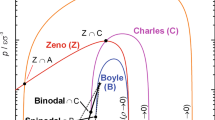Summary
Spherical lipid bimolecular membranes of a large surface area separating two aqueous solutions were formed from the total lipid extracts of human red cell ghosts and from their individual lipid components. The isotopic permeabilities of these membranes to biologically important sugars and to a related polyol were measured. The observedd-glucose permeabilities of the bimolecular membranes of the total lipid, phosphatidyl choline, phosphatidyl ethanolamine, sphingomyelin, and cholesterol were 2.35, 2.51, 2.23, 1.35, and 0.62×10−10 cm/sec, respectively. These permeabilities are about four to five orders of magnitude lower than that of the intact red cell membrane. The permeabilities of the bimolecular membrane made from an identical extract of the total lipid to different sugars varied: the values ford-glucose,d-mannose,d-ribose,d-fructose, 2-deoxy-d-glucose, 3-0-methyl-d-glucose, andd-mannitol were 2.3, 2.6, 8.9, 0.38, 16.1, 11.2, and 0.44×10−10 cm/sec, respectively. The pattern of the difference is neither parallel with nor as extensive as that observed with the intact red cell membrane. The observed permeabilities of the lipid membranes, however, agree qualitatively with what is predicted by an analysis of non-specific movements of nonelectrolytes across the cell membranes. The failure of the membrane lipids to reproduce the carrier function in a structure most closely approximating that of living membranes strongly suggests that some membrane components other than lipids are required for this function.
Similar content being viewed by others
References
Andreoli, T. E., Tieffenberg, M., Tosteson, D. C. 1967. The effect of valinomycin on the ionic permeability of thin lipid membranes.J. Gen. Physiol. 50: 2527.
Bartlett, G. R. 1959. Phosphorus assay in column chromatography.J. Biol. Chem. 234: 446.
Bean, R. C., Shepherd, W. C., Chen, H. 1968. Permeability of lipid bilayer membranes to organic solutes.J. Gen. Physiol. 52: 495.
Bray, G. A. 1960. A simple effective liquid scintillator for counting aqueous solutions in a liquid scintillation counter.Anal. Biochem. 1: 279.
Britton, H. G. 1964. Permeability of the human red cell to labelled glucose.J. Physiol. 170: 1.
Cass, A., Finkelstein, A. 1967. Water permeability of thin lipid membranes.J. Gen. Physiol. 50: 1765.
Davson, H., Danielli, J. F. 1952. The Permeability of Natural Membranes. University Press, Oxford and New York.
Fox, C. F., Kennedy, E. P. 1965. Specific labelling and partial purification of theM protein, a component of the β-galactoside transport system ofEscherichia coli.Proc. Nat. Acad. Sci. 54: 891.
Jain, M. D., Strickholm, A., Cordes, E. H. 1969. Reconstitution of an ATP-mediated active transport system across black lipid membranes.Nature 222: 871.
Jung, C. Y. 1971. Glucose transport activities in isolated membranes of human erythrocytes. II. General characteristics of the carrier activities.Biochim. Biophys. Acta (in press).
— Chaney, J. E., LeFevre, P. G. 1968. Enhanced migration of glucose from water into chloroform in presence of phospholipids.Arch. Biochem. Biophys. 126: 664.
Jung, C. Y., Snell, F. M. 1968. Unidirectional sugar flux across black membranes made from human erythrocyte ghost lipid extracts and the effect of addition of some proteins.Fed. Proc. 27: 286.
Kaback, H. R. 1968. The role of the phosphoenolpyruvate-phosphotransferase system in the transport of sugars by isolated membrane preparations ofEscherichia coli.J. Biol. Chem. 243: 3711.
Lang, C. A. 1958. Simple microdetermination of Kjeldahl nitrogen in biological materials.Anal. Chem. 30: 1692.
LeFevre, P. G. 1961. Sugar transport in the red blood cell: Structure-activity relationships in substrates and antagonists.Pharmacol. Rev. 13: 39.
— 1962. Rate and affinity in human red blood sugar transport.Amer. J. Physiol..203: 286.
— Jung, C. Y., Chaney, J. E. 1968. Glucose transfer by red cell membrane phospholipids in H2O/CHCl3/H2O three-layer systems.Arch. Biochem. Biophys. 126: 677.
— Marshall, J. K. 1958. Conformational specificity in a biological sugar transport system.Amer. J. Physiol. 194: 333.
— McGinniss, G. F. 1960. Tracer exchange vs. net uptake of glucose through human red cell surface; new evidence for carrier-mediated diffusion.J. Gen. Physiol. 44: 87.
Mueller, P., Rudin, D. O. 1963. Induced excitability in reconstituted cell membrane structure.J. Theoret. Biol. 4: 268.
——, Tien, H. T., Wescott, W. C. 1962. Reconstitution of excitable cell membrane structurein vitro.Circulation 26: 1167.
Pagano, P., Thompson, T. E. 1967. Spherical lipid bilayer membranes.Biochim. Biophys. Acta 144: 666.
Pardee, A. B. 1966. Purification and properties of a sulfate-binding protein fromSalmonella typhimurium.J. Biol. Chem. 241: 5886.
Reeves, R. E. 1950. The shape of pyranoside rings.J. Amer. Chem. Soc. 72: 1499.
Smith, I. 1960. Sugars.In: Chromatographic and Electrophoretic Techniques Vol. 1. I. Smith, editor, p. 246. William Heinemann Books Ltd., London.
Stein, W. D., 1967. The Movements of Molecules Across Cell Membranes. p. 295. Academic Press, New York.
Tien, H. T. 1967. Black lipid membranes in aqueous media: Interfacial free energy measurements and effect of surfactants on film formation and stability.J. Phys. Chem. 11: 3395.
— Diana, A. L. 1968. Bimolecular lipid membranes: A review and a summary of some recent studies.Chem. Phys. Lipids 2: 55.
Ways, P., Hanahan, D. J. 1964. Characterization and quantification of red cell lipids in normal man.Lipid Res. 5: 318.
Whittam, R. 1964. Transport and Diffusion in Red Blood Cells. p. 2. Springer-Verlag, New York.
Wilbrandt, W., Rosenberg, T. 1961. The concept of carrier transport and its corollaries in pharmacology.Pharmacol. Rev. 13: 109.
Wood, R. E., Worth, Jr., F. P., Morgan, H. E. 1968. Glucose permeability of lipid bilayer membranes.Biochim. Biophys. Acta 163: 171.
Zlatkis, A., Zak, B., Boyle, A. J. 1953. A new method for the direct determination of serum cholesterol.J. Lab. Clin. Med. 41: 486.
Author information
Authors and Affiliations
Rights and permissions
About this article
Cite this article
Jung, C.Y. Permeability of bimolecular membranes made from lipid extracts of human red cell ghosts to sugars. J. Membrain Biol. 5, 200–214 (1971). https://doi.org/10.1007/BF02107724
Received:
Issue Date:
DOI: https://doi.org/10.1007/BF02107724




